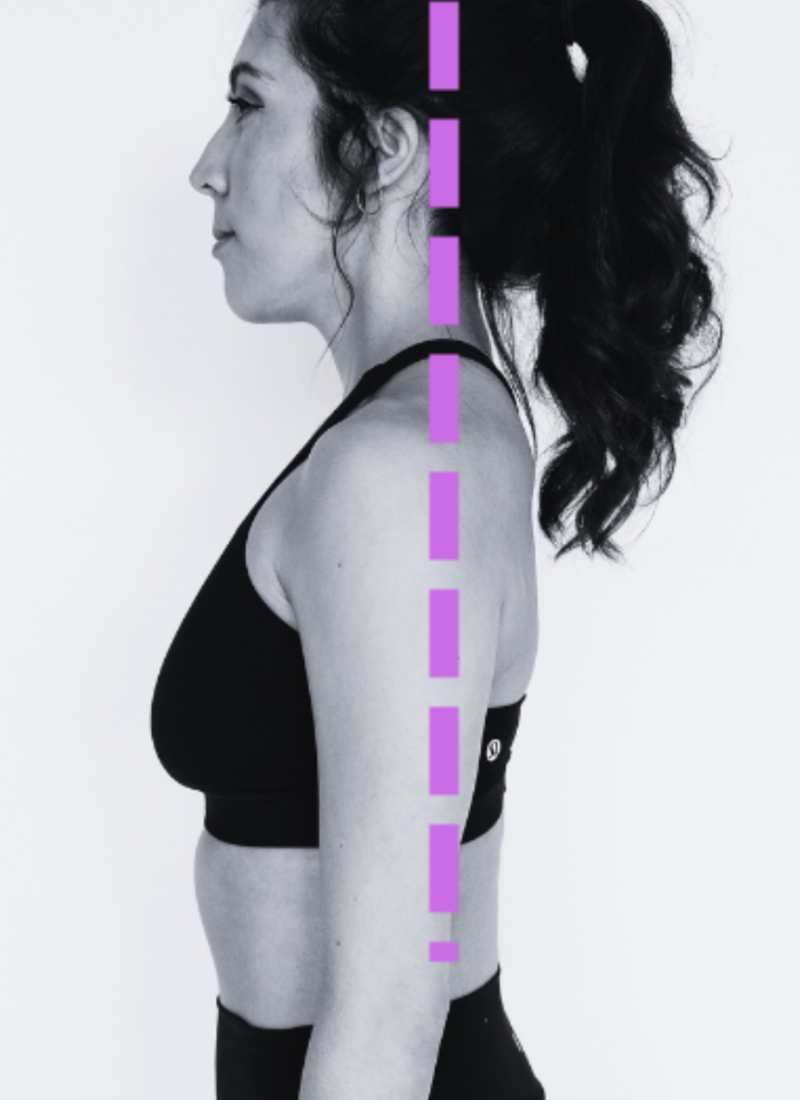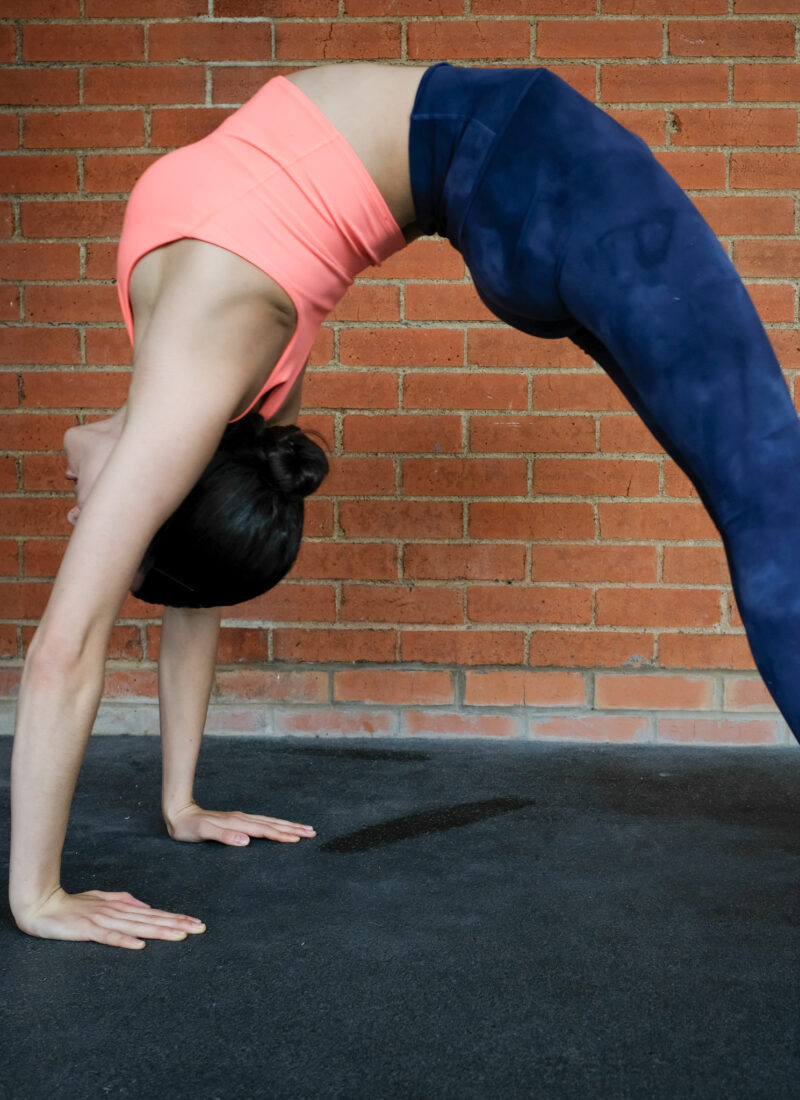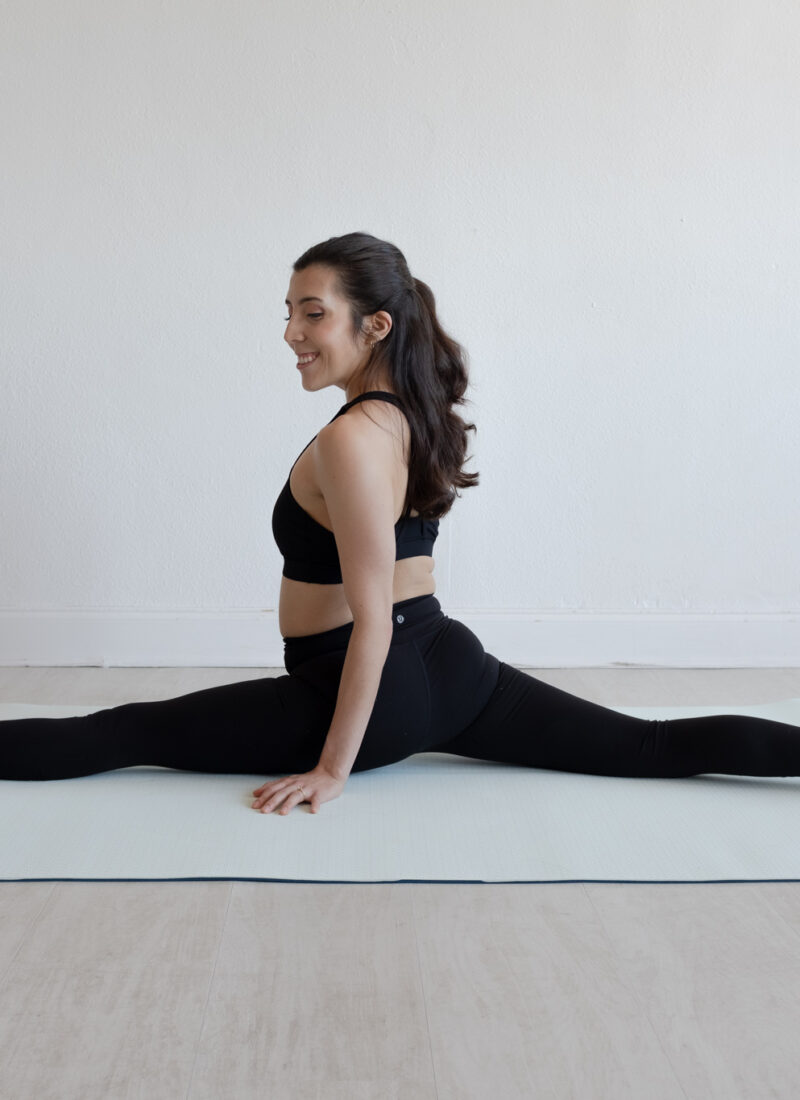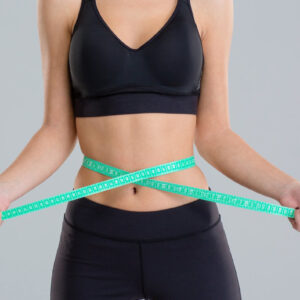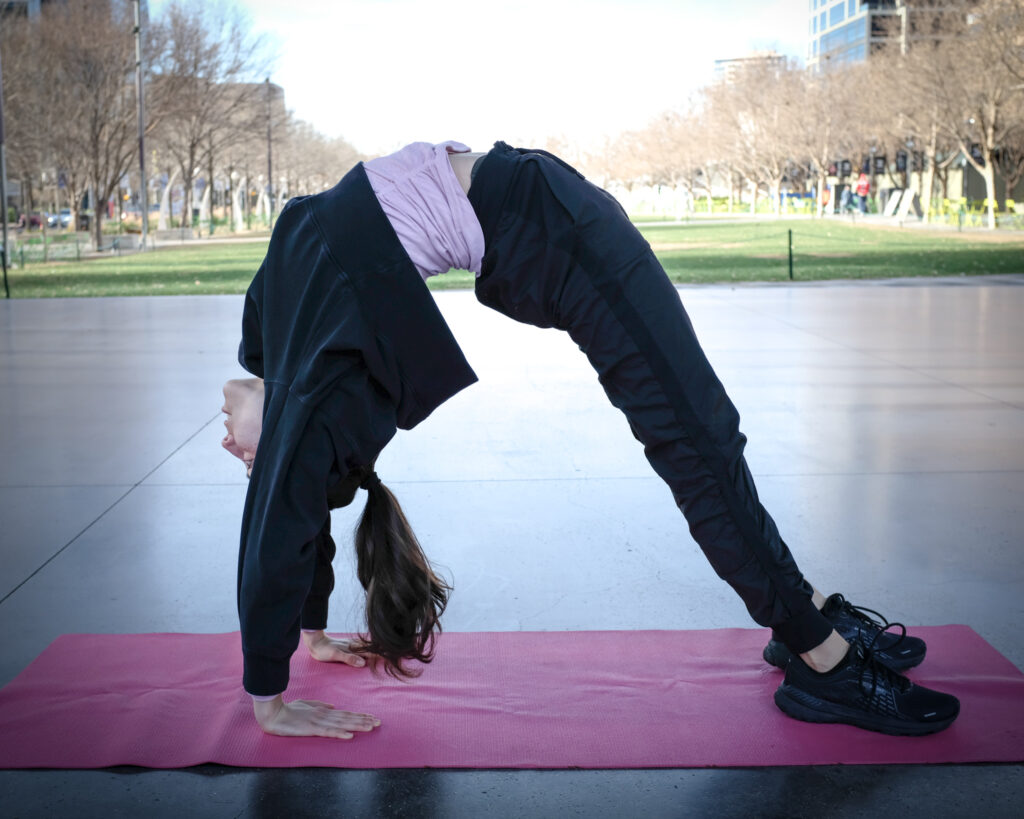
Looking to know how to improve flexibility and mobility?
It can seem like some people are just born with naturally limber bodies, while others of us may feel stiff as a board.
If you are one who is trying to develop the ability to touch your toes, or get into the over-splits, this article is going to give you some good information about the science and wisdom behind improving flexibility and mobility, as well as at-home exercises you can start today.
Flexibility and mobility are two similar things, however they have differences. Improving these things is very important for your ability to move around at a young age as well into your elderly years.
With dedication and consistency, anyone and everyone can see improvement in their flexibility and mobility. But first, let’s dive deeper into how it can be improved.
FLEXIBILITY VS. MOBILITY
First of all, what is the difference between flexibility and mobility? Many of us have probably heard these terms thrown around in the health and fitness community, but not everyone may know that they don’t necessarily mean the same thing.
Flexibility
Simply put, flexibility is passive, while mobility is dynamic or active. For example, flexibility is when you can pull your leg with your hand so it touches your head in a leg extension. This explains that flexibility is the ability for a muscle or connective tissue to elongate to its fullest length.
To become more flexible, you need to stretch, ie. holding a yoga pose, quad stretch, or any other “passive” stretch that you hold for typically 20 to 30 seconds.
Mobility
In contrast, mobility is the ability to get your leg to that exact same spot without the help of your hand.
Mobility training builds strength at your fullest range of motion. For example, you may be able to stretch your hips on the ground in the straddle, but can you squat with weights and drop your butt to your heels? This type of training helps you have functional movement in ways that go beyond passive stretch holds.
WHICH IS MORE IMPORTANT? FLEXIBILITY OR MOBILITY?
It is hard to determine which is more important for individuals. What is more important for one individual may not be the case for another.
Simply, you need both flexibility and mobility for optimal movement. Someone can be flexible but not mobile. On the other hand, someone who is mobile is also flexible. Therefore, it is important to use flexibility and mobility training in conjunction with one another.
A lot of hyper flexible people such as dancers and yogies can stretch into certain positions with ease. For example, they may be able to squat to the ground but if they add weight, they might feel pain in their back. This is from a lack of mobility training, leading to a habit of squatting without activating the right muscles to create stability in their bodies.
WHAT HAPPENS TO OUR BODIES WHEN WE STRETCH
1. WE HELP PREVENT INJURY
Having a more flexible body helps you move freely with less risk of injury. For example, if you go to pick up a heavy object but you lack range of motion in your spine, you might throw out your back easily.
By training strength at your fullest range of motion, you can move better and with more strength.
2. WE INCREASE OUR RANGE OF MOTION
It is no longer believed that stretching lengthens our muscles because it is literally impossible to lengthen a muscle fiber. Think of your muscle fibers as a Chinese finger trap – muscles have a max length they can stretch to, and they can contract, but they cannot grow or stretch longer.
Rather, when we stretch we increase our range of motion by desensitizing our muscles to the pain we feel from stretching. We are training our muscles and our brain that it is ok to move into a deep range of motion.
Of note: Make sure if you feel pain during stretching that it is not a sharp or shooting pain, but more like a sore discomfort. If you feel sharp or shooting pain, stop the position immediately and assess for injuries and/or see a healthcare professional.
3. IMPROVES POSTURE
For many of us, our posture is suffering due to countless hours of sitting at a desk or binging our favorite TV show.
To improve our posture, we need to stretch and strengthen our tight, contracted muscles in our neck, hips, back, and shoulders.
HOW TO GET STARTED WITH FLEXIBILITY AND MOBILITY
1. ESTABLISH A MOBILITY BASELINE
In order to make improvements, first you need to determine where you have room to improve. Take photos of your starting point. Here are some things to assess at the beginning:
- Touch your toes – how far can you reach down to your toes?
- Posture – Do you stand up straight?
- Splits – This move is more advanced for many. But if this is your goal, it is a good idea to assess your baseline.
- Squat – This is a good way to assess hip mobility. Can you squat with your pelvis lower than your knees?
Now, use this as just a baseline. This won’t diagnose any health conditions. This is for your personal knowledge to improve upon.
2. ESTABLISH GOALS FOR YOURSELF
When it comes to making progress, one of the best ways to get started is by setting a goal for yourself. This will give you something to work towards and stay motivated even on days where you don’t feel very motivated.
It is well-known and documented that people who set goals for themselves are more likely to outperform those who do not set a goal for themselves. So set those goals!
As for me, for example, I have set goals for myself to achieve the splits, and by making this goal – in conjunction with filming myself daily – I stayed accountable with myself until I achieved that goal.
TIPS FOR IMPROVING FLEXIBILITY AND MOBILITY
BE CONSISTENT
To be consistent, fall in love with the process rather than the product. Try to improve by just 1% everyday for long-term, big results.
A good starting goal is to aim for three days of flexibility training per week. If each session lasts 10-15 minutes, that should be sufficient in order to start to see improvement.
TAKE IT SLOW
Mobility and flexibility training, just like any other form of physical activity, can be a slow process at first as our bodies adapt to the new activity.
Keep in mind, learning the splits or the backbend may not happen overnight, but with a few weeks of consistency, you WILL see results.
Don’t push yourself to the point of sharp pains out of lack of patience as this could lead to injury.
BREATHE INTO THE MUSCLE
When holding a static stretch, I highly recommend breathing into the stretch. Imagine you have lungs in the muscle you are stretching and try to take a deep breath there. It may sound crazy, but there is something to it when we connect the mind and body in such a way, and it can lead to greater improvements.
Scientific studies even suggest that thinking about your muscles may make you stronger, and in my opinion, it could make you more flexible as well.
DEVELOP A ROUTINE
Probably the most important tip of all of these is to develop a routine to get more flexible. This is an important component of anything you are trying to achieve in life. To develop a routine follow these guidelines:
- Set Small Goals: This will help you track your milestones.
- Make it fun: Do what you can to make it fun. Listen to your favorite music while training, or train with a partner.
- Track your progress: Seeing how much improvement you’re making is extremely motivating.
INCORPORATE MOBILITY TRAINING INTO YOUR WORKOUT ROUTINE
This tip is more for people who are already avid gym goers but need to start making a change in their mobility abilities.
When you’re at the gym, make it a point to add mobility and flexibility training into your routine.
If you’re lifting weights, consider doing mobility moves such as deep sumo squats, hello dollies, or calf raises.
FOAM ROLL
Foam rolling is a form of self massage in which a foam roller is used to compress and target certain muscles.
The positive effects of foam rolling are not very well studied at this time, but many athletes and myself speak from experience when we argue it is beneficial to recovery and flexibility training.
It is believed that the benefits from foam rolling may be psychophysiological. Regardless, I find it helps me get more flexible.
PERFORM STATIC STRETCHES AFTER STRENGTH TRAINING
Static stretches (or holding a stretching position for any duration of time, but usually 20-60 seconds) should be done when your muscles are warm. That is why it is best to do this after your workout, as you will have already warmed up your muscles.
THE BEST EXERCISES FOR FULL BODY MOBILITY
WRIST MOBILITY EXERCISES
WRIST CIRCLES
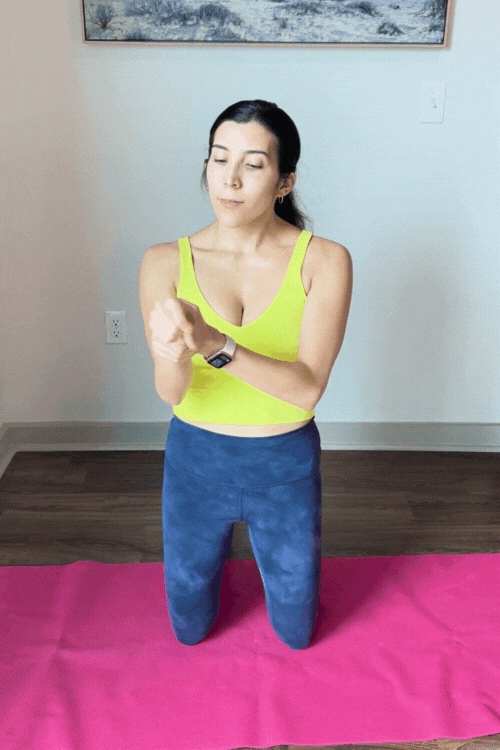
- Hold one wrist with one hand.
- Rotate your wrist slowly counter clockwise and then clockwise.
- Keep your breathing normal.
- Repeat 10 times.
- Repeat on the other wrist.
WRIST WEIGHT LOADING
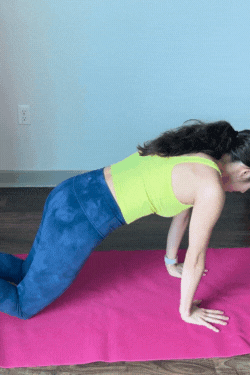
- Start on all fours.
- Shift weight into hands and lean forward at knees until wrists are fully extended. Hold this stretch in forearms for 30 seconds.
- Push the ground with your fingers backwards.
WRIST CURLS
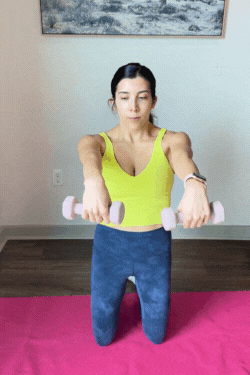
- You will need a set of 2-3 pound dumbbells.
- Hold our your hands while holding the dumbbells.
- Curl your wrists as far up and down as possible, strengthening your full range of motion.
- Repeat 4-5 times for three sets.
SHOULDER MOBILITY EXERCISES
WALL SHOULDER CIRCLES
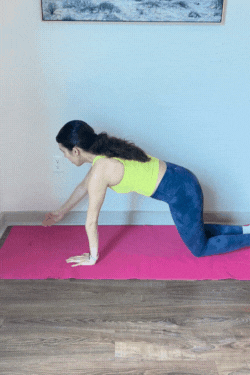
- Assume the position on your hands and knees, parallel to a wall, about 4 or 5 inches away.
- With the arm closest to the wall, circle your arm in a big motion, avoiding touching the wall with your hand.
- Repeat 5-8 times.
- Repeat on the other side.
RESISTANCE BAND SHOULDER CIRCLES
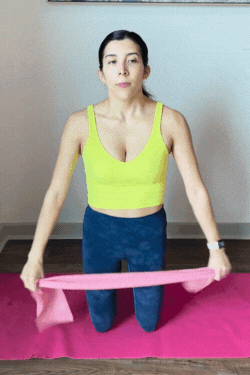
- Hold a resistance band in both hands, arms down by your hips.
- Circle your arms backwards and above your head, still holding the resistance band.
- Once your arms are behind your back, reverse the move and bring your arms back to the front.
- Repeat 10 times.
THORACIC ROTATIONS
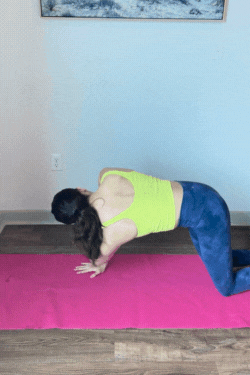
- Assume the position on all fours, and then place one hand behind your head.
- Rotate your elbow and head down as low as you can.
- Reverse the move and rotate your head and elbow as high up as you can.
- Repeat 10 times.
- Repeat on the other side.
BANDED SHOULDER FLEXION
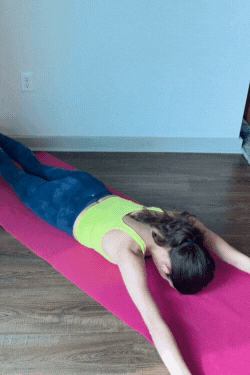
- Lay face-down with arms and legs extended. Have a resistance band in both hands.
- Lift your hands up as high as possible, feeling the mobility training in your shoulders.
- Pull back the resistance band to the back of your head.
- Reverse the move by extending your arms in front of your head, then lower your hands.
- Repeat 10 times.
HIP MOBILITY EXERCISES
PIGEON LIFTS
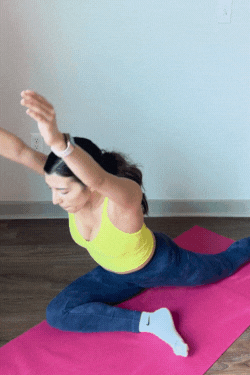
- Sit in pigeon pose, so with one knee bent as close to 90 degrees in front of you, and your other leg extended straight behind you.
- Straighten your arms over head, and bend forward at your waist.
- Reverse the move and sit back up straight.
- Repeat 10 times then switch sides.
HIP CIRCLES
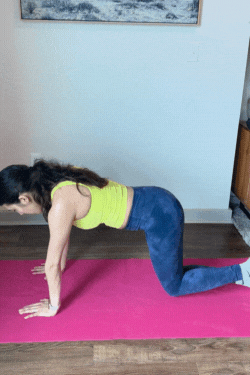
- On all fours, pick up one knee up behind you using your glute. You may keep your knee bent.
- Circle your knee outwardly and back down to the ground. Reverse the move in the opposite direction.
- Repeat ten times, then switch sides.
SPINE MOBILITY EXERCISES
CAT COW
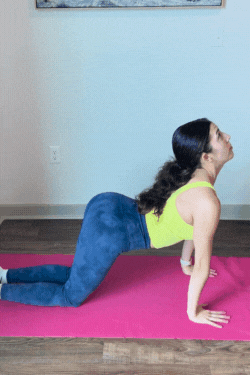
- Get on all fours with your hands shoulder-width apart and knees directly below hips.
- Extend your neck and back so that your face is looking upwards, like a “cow.”
- Arch your back like a “cat,” bringing your abdomen in and your head down.
- Repeat 10 times.
THREAD THE NEEDLE WINDSHIELD WIPERS
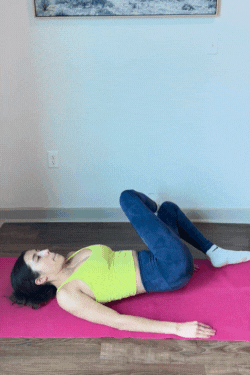
- Laying on your back, bend one knee at a 90 degree angle. Place your opposite ankle on your leg so that your make a “figure four shape.”
- Slowly rotate your legs from side to side.
- Repeat ten times, then switch legs.
THE BOTTOM LINE ON HOW TO IMPROVE FLEXIBILITY AND MOBILITY
In summary, flexibility is the ability to hold a static pose, but mobility is the ability to move with strength through your whole range of motion.
There are many moves for all to use on a regular basis in order to improve their mobility such as wrist circles, wrist weight loading, wrist curls, wall shoulder circles, resistance band shoulder circles, thoracic rotations, banded shoulder flexion, pigeon lifts, hip circles, cat cow, windshield wiper stretch, and more.
Like anything in life, things that will last take time. It is possible to improve your flexibility and mobility with lots of dedicated training on a consistent basis.
Disclaimer: Exercise is not without its risks. If at any point while doing a workout from this website you begin to feel faint, dizzy or have physical discomfort, you should stop immediately and consult a medical professional. By performing any fitness exercises without supervision such as with at-home workouts, you are performing them at your own risk. See a fitness professional to give you advice on your exercise form. Elizabeth Vigen will not be responsible or liable for any injury or harm you sustain.


 #goprohero11 #d
#goprohero11 #d
 #shootf
#shootf

 .
.
.
Thank you to everyone who w
.
.
.
Thank you to everyone who w
 @stephanievigen
@stephanievigen
 #pentaxk1000
#pentaxk1000





